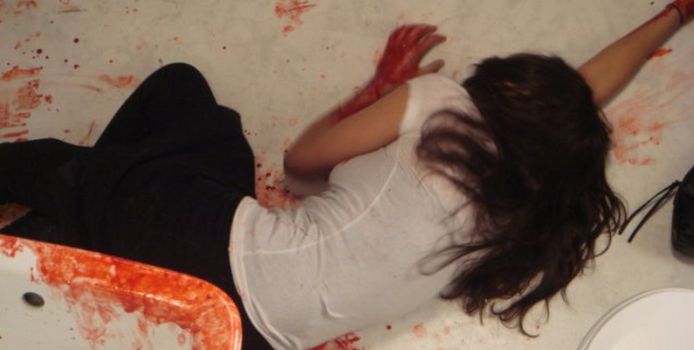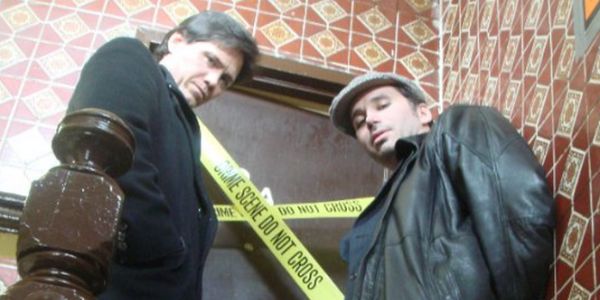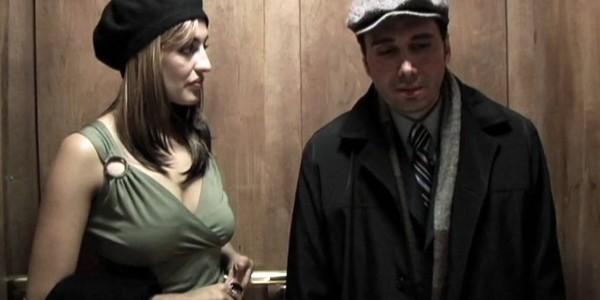LET ME DIE QUIETLY: A Low-Budget Film Noir Gem

Chilean. Living in Buenos Aires. Currently on book #4. Melomaniac,…
Film Noir is not an easy genre to tackle nowadays, simply because trends in culture have changed. The hard-boiled detective of the black and white screen, the one with the alienated, tough exterior and a penchant for femme fatales – think Dana Andrews in Laura or Bogie in The Big Sleep – would cause no more than a snicker, so removed are they from the world we witness every passing day.
Our post-modernist mindset asks for the type of heroes we find authentic, those we can relate to, this is why the grand days of Film Noir have passed – which is not to say some of its elements cannot be used for fine, fine cinema.
This is precisely what Charles Casillo, author and filmmaker, the man behind the modern Noir Indie thriller Let me Die Quietly (2009), accomplishes. He takes the finest elements of Noir (a broody, tortured leading man, the mysterious femme fatale, a murder, an old-school cop) and crafts a tale that keeps you riveted until the very end.
A Departure from the Hard-Boiled Hero
Casillo himself plays Mario, a deeply broken, desperately lonely man. Mario is a sex addict, spending his afternoons in gay pornographic movie houses, wandering the streets of New York with no aim, no purpose. The listlessness of his small trust-fund existence can be seen on his face. I’ve seldom encountered pain portrayed with such finesse. It was chilling to experience Mario’s vacuity of soul first hand: Charles’ handsome face is distorted by the emptiness of his eyes, his voice is world-weary – there is a slow cadence to every syllable he utters, as though the very act of speaking is too great an effort for one so wounded.

Mario is caught between sexual desire he cannot control and a deeply-rooted sense of spirituality. We see him in the confession booth, at the very beginning of the film, trying to make sense of his demons, trying to hold on to God, a last attempt at preserving his own sanity. And the city only serves to increase the feeling of alienation, the sensation of one tethering on the edge of a nervous breakdown, or suicide.
But there is more to Mario than wells of pain, he is also psychic and has repeated visions of grisly murders taking place in New York. It is these visions that propel the story forward.
New York as a Witness and Character
New York, given the nature of city, a kaleidoscope of vibrancy and life, but also violence and death, has often been used as a character all on its own (Scorcese’s Taxi Driver and Mean Streets, Stanley Kubrick’s Eyes Wide Shut, Sidney Pollack’s Three Days of the Condor, come to mind). Let Me Die Quietly is no exception. We are presented with a cold New York, almost clinical in its iciness. The colors are sharp and unyielding. There is nothing lovely to behold except cold, tough cement.
The exterior is in perfect symmetry with Mario’s interior and as he wanders the streets of the city, sometimes alone, other times with Gabrielle, the mysterious psychic he has become acquainted with, the distastefulness of Mario’s plight, the horror of the murders is a point driven further home by the way the city is used.
The Femme Fatale
From the moment Gabrielle sets foot into Mario’s life we believe he has finally found a soul mate. Someone to see through the rubble of his life into his very soul, for Gabrielle is also psychic and knows Mario’s plight all too well. In fact, she sees the same murders he sees, but from a different perspective. Gabrielle allows Mario to believe he is not alone, and in meeting her, his faith is renewed. Faith that his life might indeed have a purpose, if only to stop the violence. Gabrielle is beautifully played by the alluring Dana Perry. As the femme fatales of the noir of old, she is not all she seems. There is more lurking beneath the façade of femininity and grace.

The supporting cast is laudable as well, Ian Tomaschik plays Dr. Avery, Mario’s psychiatrist, with just the right amount of cynical detachment, and Paul Coughlan brings the hardness of old-school homicide detectives in a natural, easy manner, while also adding a touch of sympathy. Ian MaCrae delivers as the stranger and suspect (I don’t want to give too much away). Also touching is Stephan Geras’ portrayal of the mentally disturbed Russell.
A Kind of Dream State: Editing at its Finest
One of the technical aspects of this film, which makes it a joy to experience, is the fantastic editing. The transitions between the confessional booth, the X-rated movie theater, and the psychiatrist’s office is smooth and beautiful to look at. It is the seamless editing, coupled with Mario’s voice-over that gives the film a dreamlike quality, one sequence slowly melts into the next, as though you’re a part of Mario’s consciousness, experiencing the extraordinary events he’s a part of through his altered perception.
It is said the pace of the editing can make or break a film, and in this case, Let Me Die Quietly has nothing to envy high-budget productions of any kind. Sleek and fluid, the editing carries the sequences forward with a touch of elegance.
A Film in the Making: Blood, Sweat and Tears
In 2005, author Charles Casillo was determined to make a film, despite the lack of a budget and the fear mongers that told him he would most certainly fail if he tried. He took his passion and his focus and the universe came up with the rest. Hugh C. Daly appeared, allowing Casillo to use his production studio and equipment free of cost (the same Hugh C. Daly who gives a solid performance as the priest to Mario’s confession). Mitchell Reichler would then join the project as the director to Casillo’s vision and the rest of the cast would appear in the course of a single day.
Because the actors and the crew were working pro-bono on the film, a project they whole-heartedly believed in, schedules were tight and shooting was slow. The production was sometimes plagued by problems of a personal and financial nature, in fact, production was at a standstill until executive producer Kelvin Dale stepped in, infusing the film with much needed funding and a brand new energy. After two very trying years, the project was finally completed. While shooting any type of film during that time-frame involves continuity being sacrificed, the film is so well made, you’d never notice it, unless you really looked.
Let Me Die Quietly is the result of one man’s dream and the talent of a very strong cast who believed in that dream. It makes us appreciate the film even more as we know the drama and heartache that went on behind the scenes. But the finished product is a rare thing: a low-budget Indie thriller that defies being put into a genre-box. Is it a Noir? Yes, it most certainly has those elements. Is it a romance story? A psychological thriller? A tale of redemption? Whatever it is, Let Me Die Quietly is certainly a fine, fine piece of cinema. A true independent gem. This is the kind of stuff one lives for.
And also, you never see that ending coming. Brilliant work.
The film is available on Amazon, here.
What about you, are there any modern Noirs you’d recommend?
(top image source: Breaking Glass Pictures)
Does content like this matter to you?
Become a Member and support film journalism. Unlock access to all of Film Inquiry`s great articles. Join a community of like-minded readers who are passionate about cinema - get access to our private members Network, give back to independent filmmakers, and more.
Chilean. Living in Buenos Aires. Currently on book #4. Melomaniac, cinephile, books, & tea. Premature gray hair. Likes succinct by-lines as you can see, but in real-life, she can talk her way into and out of most anything.













